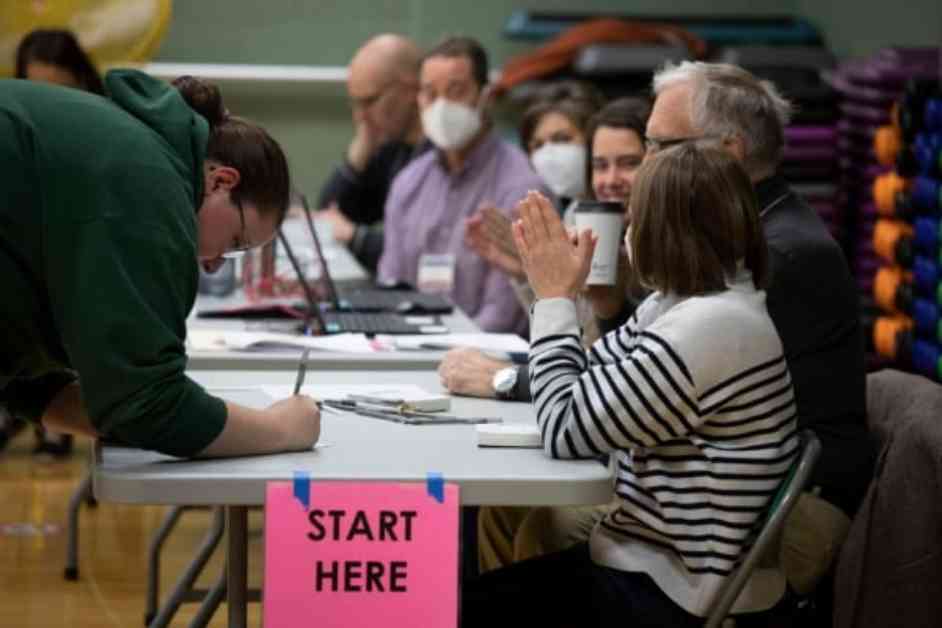Impact of Decreased Student Voting on 2024 Elections
College students play a crucial role in shaping the outcome of elections, with their voting patterns often reflecting broader trends in the electorate. The 2022 midterm elections saw a significant decrease in college student voting compared to 2018, raising concerns about the potential impact on the 2024 presidential election. This decline in student voter turnout has sparked discussions about the factors influencing young voters and the strategies needed to engage them in the democratic process.
The Shift in Student Voter Turnout
According to a new report by the National Study of Learning, Voting, and Engagement (NSLVE) at Tufts University, only 31.3% of college students voted in the 2022 midterms, down from 40% in the previous midterms. While the 2022 numbers were higher than the 2014 midterms, where fewer than one in every five students cast a ballot, the decrease is still concerning given the momentum of youth voter turnout in recent years.
The surge in student voting in 2018 was attributed to various factors, including enthusiasm about important state and local elections, increased voter engagement initiatives by college administrators, and efforts to create a civic education climate on campuses year-round. However, the drop in student voter turnout in 2022 suggests that the high rate of student participation in the 2020 presidential election may have been an anomaly rather than a sustained trend.
Challenges and Opportunities for Student Voter Engagement
While voter registration rates among college students rose in 2022, climbing from 73.3% to 76.1%, the increase did not translate into higher turnout. Many civic engagement efforts on college campuses focus more on registering students to vote rather than encouraging them to participate in elections. Lack of awareness about polling locations, time constraints, and insufficient information about candidates are some of the barriers that prevent students from voting.
Efforts to demystify the political process and educate students about the voting process can help increase turnout. Campus initiatives that provide information about early or absentee voting options, polling locations, and candidate profiles can empower students to make informed decisions at the polls. It is essential to engage first-time voters and ensure they feel confident and prepared to participate in the electoral process.
The impact of the COVID-19 pandemic on student engagement with election events cannot be overlooked. Shutdowns and restrictions during the pandemic limited opportunities for in-person voter education and outreach, affecting student participation in elections. However, as campuses reopen and activities resume, there is a renewed sense of enthusiasm among students to learn about voting and civic engagement.
Demographic Disparities in Student Voting
The decline in student voting rates in 2022 was not uniform across all demographic groups or types of institutions. Black female students, who had the highest voting rates in 2018, experienced a significant drop in turnout in 2022. Historically Black colleges and universities (HBCUs) also saw a decline in student voting, highlighting the need to address disparities in voter engagement among different groups.
Undergraduate students, who typically vote at lower rates than graduate students, witnessed a substantial decrease in voting between the 2018 and 2022 midterm elections. The gap between students in STEM disciplines and other fields of study also underscores the importance of tailored outreach efforts to engage students from diverse backgrounds and academic interests.
Universities play a crucial role in closing the gaps in student voter turnout by raising awareness about disparities and implementing targeted initiatives to increase engagement. Providing data on turnout rates, organizing voter education events, and fostering a sense of community on campus can contribute to higher student participation in elections.
State-Level Trends and Policy Impact
Michigan emerged as an outlier in the 2022 midterm elections, with a 7.1-percentage-point increase in student voting compared to 2018. Key factors contributing to this rise included the presence of issues important to students on the ballot and new voting access laws, such as same-day registration. The ease of voting and access to information are critical factors that influence student engagement in elections.
In contrast, states like Florida, Missouri, Montana, New Jersey, and Tennessee experienced significant decreases in student voting, possibly due to restrictive election laws that impacted student voter registration. The policy environment at the state level can influence voter turnout among college students, highlighting the need for advocacy and awareness campaigns to protect voting rights.
Despite the challenges posed by the pandemic and policy changes, there is optimism about the long-term trajectory of student voter engagement. The sustained upward trend in student participation over the past eight years indicates that gains in voter turnout can be maintained even in years of fluctuation.
In conclusion, the impact of decreased student voting on the 2024 elections underscores the importance of proactive efforts to engage young voters and address barriers to participation. By promoting voter education, facilitating access to voting resources, and fostering a culture of civic engagement on college campuses, we can empower students to exercise their democratic rights and shape the future of our democracy.
